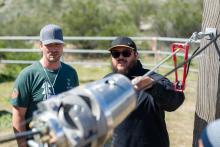Southern Ute Indian Tribe ‘In The Driver’s Seat’ As Open Access Fiber Network Transforms Reservation
Among the burgeoning number of Tribal networks being built across Indian Country, a new fiber-to-the-home (FTTH) network spanning the Southern Ute Indian Reservation is unique.
When service was lit up in Ignacio, Colorado in May, the network became the only open access network owned by a Tribal government, providing its residents with a choice between two different Internet Service Providers (ISP) offering lightning-fast connection speeds.
Five years in the making, the Southern Ute network is not only the first Tribally-owned open access network, it is also among the first of the new fiber projects funded by the Tribal Broadband Connectivity Program (TBCP) to start offering services.

With a strong commitment from Tribal leadership, savvy decision-making, and strategic vision, the Tribe has been able to fundamentally reshape the broadband market in its region, increasing speeds and competition while lowering prices.
Slow Speeds and High Prices Fuel Mission to ‘Bust That Monopoly’
As with many other Tribally-owned networks, the Southern Ute Indian Tribe’s broadband journey began with a recognition that the existing telecommunications infrastructure on the Reservation simply could not meet the needs of the modern moment.
Tribal Council Chairman Melvin J. Baker tells ILSR that many in Tribal leadership “realized we’ve needed it for quite some time.”




